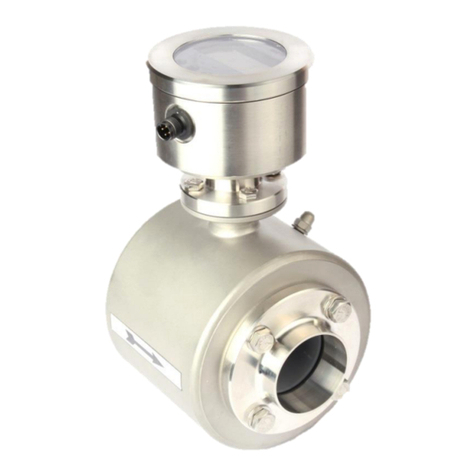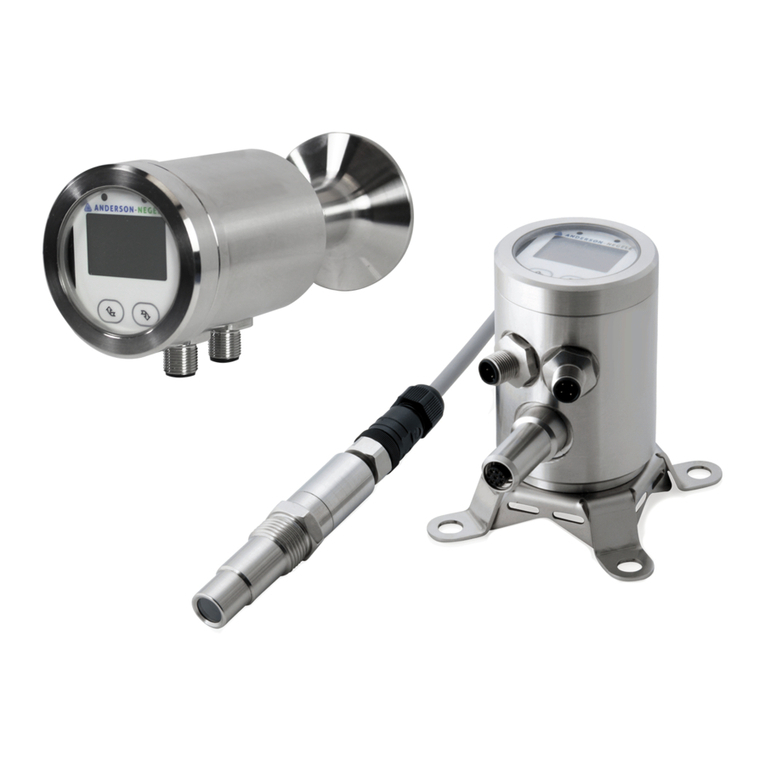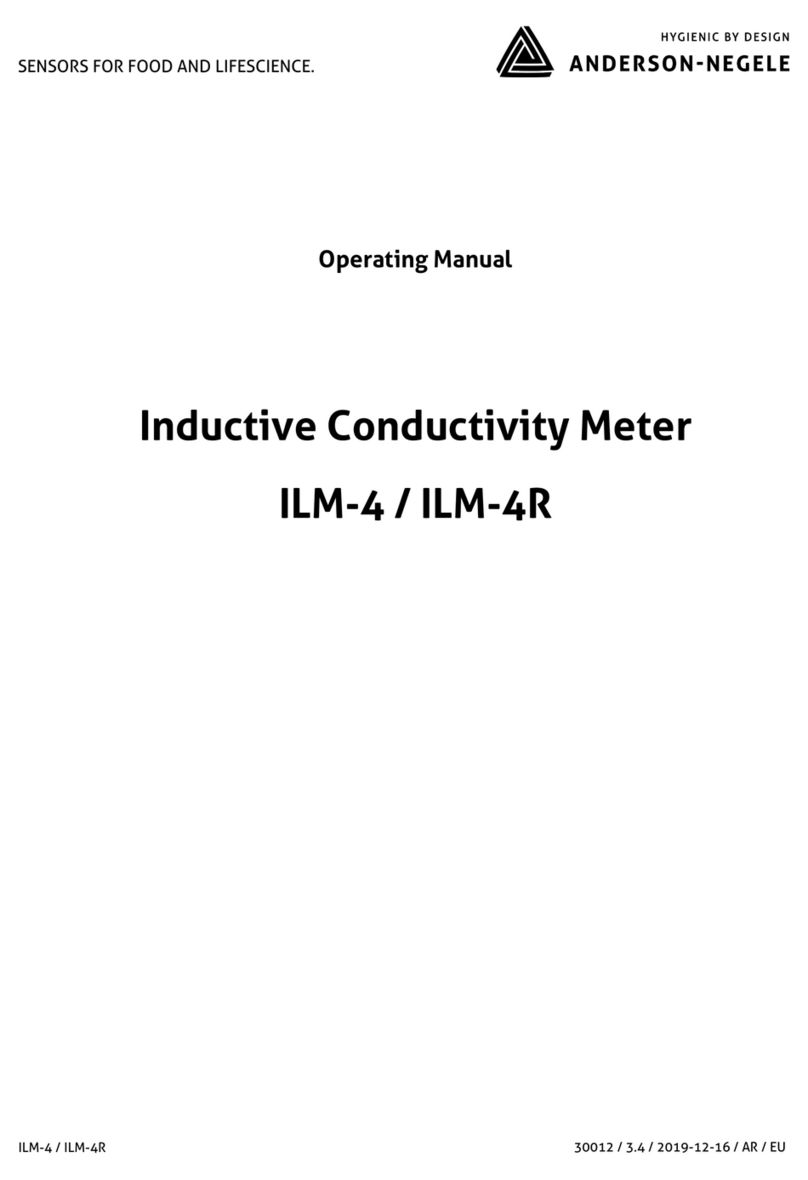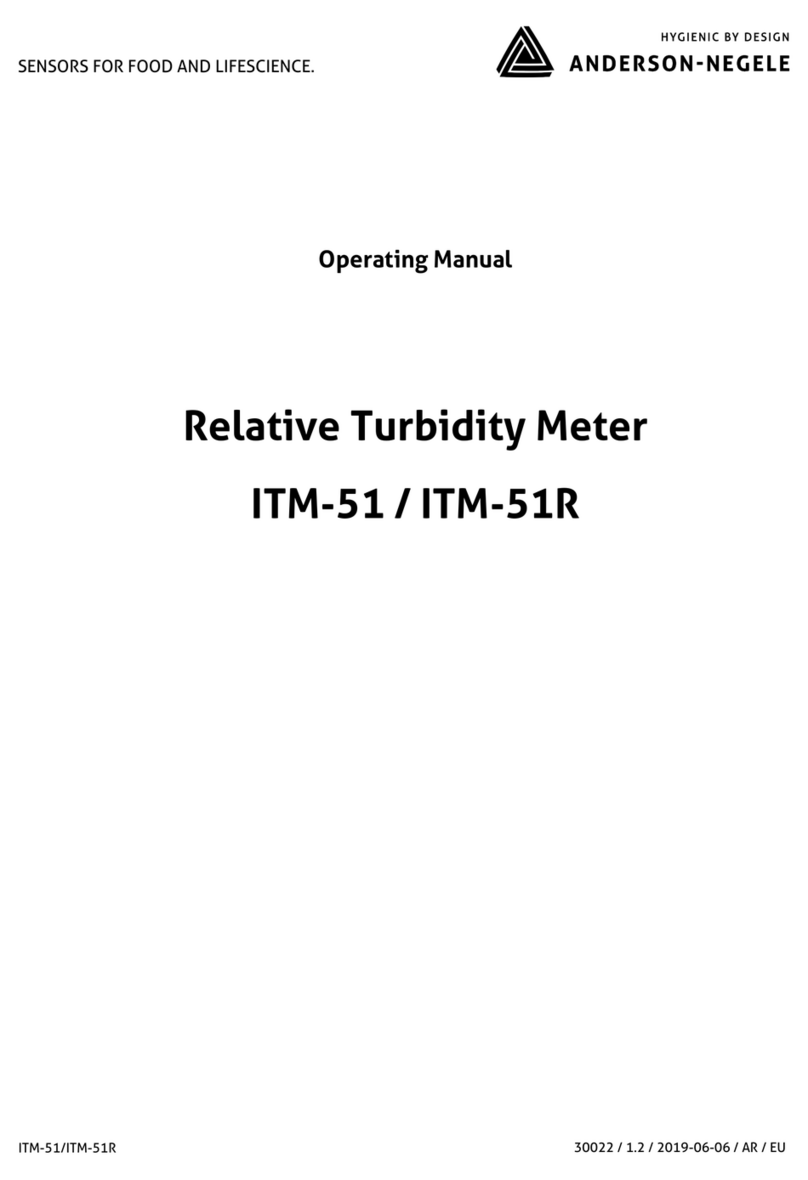
Anderson-Negele 2070-IZMAG
Table of contents
4.4.5. Ethernet Communication Option ................................................................. 36
5. Commissioning ....................................................................................................... 41
5.1. General information ............................................................................................... 41
5.2. Advice for starting-up the IZMAG .......................................................................... 42
5.3. Basic settings upon delivery ................................................................................. 42
5.3.1. System structure and operating elements ................................................... 42
5.4. Flow direction ......................................................................................................... 42
5.5. Zero point adjustment (“ZERO adjust”) ................................................................ 43
5.6. Metering interruption (assignment of the digital input) ....................................... 43
5.7. Metering with an empty meter tube ....................................................................... 43
5.7.1. Internal "EMPTY pipe detection" ................................................................. 43
5.8. Metering at low conductivities ............................................................................... 44
5.9. Use of the internal BUS interface .......................................................................... 44
6. Operation ................................................................................................................. 44
6.1. Basic keypad functions .......................................................................................... 45
6.2. Image navigator ...................................................................................................... 45
6.3. Flowchart ................................................................................................................ 47
6.3.1. Zero reset of the volume counter ................................................................ 48
6.3.2. How to delete malfunction messages .......................................................... 48
6.3.3. Parameter change ...................................................................................... 48
6.3.4. How to release a parameter change: .......................................................... 49
6.3.5. How to release the service functions: .......................................................... 49
6.4. Image level: Measured values ............................................................................... 50
6.4.1. Measured value: Volume ............................................................................ 50
6.4.2. Measured value: Flow rate .......................................................................... 50
6.4.3. Measured Value: Total Quantity .................................................................. 50
6.4.4. Measured value: Flow rate and volume ....................................................... 50
6.5. Image level: Base parameters ............................................................................... 50
6.5.1. Language .................................................................................................... 51
6.5.2. CS3Bus address ......................................................................................... 51
6.5.3. Dimension ................................................................................................... 51
6.5.4. Profibus address ......................................................................................... 52
6.5.5. Parameter Mode ......................................................................................... 52
6.5.6. Bluetooth Menu ........................................................................................... 52
6.6. Image level: Pulse output ...................................................................................... 52
6.6.1. Pulse mode ................................................................................................. 52
6.6.2. PV1 ............................................................................................................. 54
6.6.3. TP1 ............................................................................................................. 54
6.6.4. PV2 ............................................................................................................. 54
6.6.5. TP2 ............................................................................................................. 54
6.7. Image level: Digital input ....................................................................................... 55
6.7.1. Function: Digital input ................................................................................. 55
6.7.2. IT1 .............................................................................................................. 55
6.8. Image level: Current output ................................................................................... 55
6.8.1. Current output mode ................................................................................... 56
6.8.2. Qmax .......................................................................................................... 56
6.8.3. TP3 ............................................................................................................. 56



































